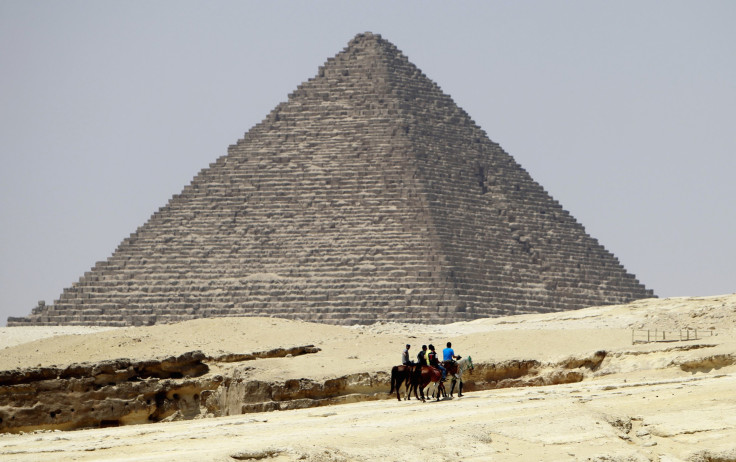Mystery Of Ancient Pyramid Construction: Egyptians’ Simple ‘Trick’ For Moving Massive Stone Blocks Revealed

There are an estimated 2.3 million limestone blocks that form the 455-foot-tall Great Pyramid of Egypt. The largest of these blocks weigh between 25 and 80 tons. One question that has persisted through the ages is: How did an ancient people with rudimentary technology drag such massive stones through the desert -- in some instances, hundreds of miles?
Researchers from the University of Amsterdam announced this week that the answer is surprisingly simple. Their study, published in the journal Physical Review Letters, makes the case that ancient Egyptians used wet sand to maneuver the blocks, a modest trick that reduced friction between the rocks and the sand during long hauls across the desert.
Archaeologists have long assumed that the people who built the pyramids used wooden sledges (planks with upturned edges) to move stones from nearby quarries to the site of the pyramids, but still wondered how the ancient builders avoided the dilatory effects of sand berms – the heaps of sand that would have formed at the front of the wooden sledges as they were dragged.
Constantly clearing the sand out of the way would have proved tedious. Researchers looked at other methods that may have been used to transport giant blocks and landed on a technique involving wet sand.
Researchers built a laboratory version of an Egyptian sledge and experimented with it in a tray of sand. They found that as water was added to the sand, it created small “capillary bridges” between individual grains, locking them in place and preventing them from piling up in front of the sledge.
This made the sand stiffer. As the stiffness of the sand increased, the force required to pull the sledge decreased proportionally.
Wet desert sand, researchers discovered, is about twice as stiff as dry sand.
The process of wetting the sand in front of a sledge can be seen in a wall painting in the ancient tomb of Djehutihotep. The schematic drawing shows 172 Egyptian workers transporting a 23-foot-tall statue fitted to a sledge. One worker positioned at the front of the sledge appears to be pouring water onto the sand directly in front of it.

“Egyptologists had been interpreting the water as part of a purification ritual, and had never sought a scientific explanation,” Daniel Bonn, lead researcher of the study, told the Washington Post. “And friction is a terribly complicated problem; even if you realize that wet sand is harder – as in a sandcastle, you cannot build on dry sand — the consequences of that for friction are hard to predict.”
Once the blocks were on site, ancient Egyptians are thought to have used ramps to raise the blocks into place, but there is still debate about how exactly the ramps were oriented.
© Copyright IBTimes 2024. All rights reserved.






















